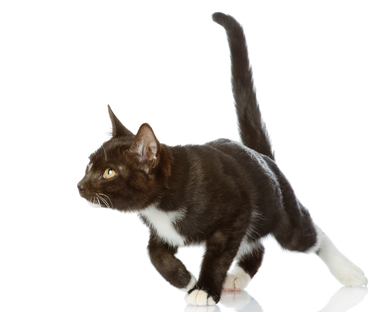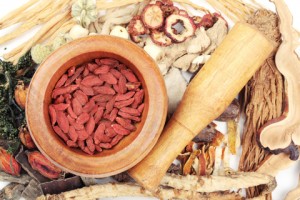Skinning the cholesterol cat
 It’s difficult to pin down the reasons underlying an increasing risk for heart disease as women age. Menopause in particular is associated with a rapid increase in blood LDL cholesterol and triglycerides levels and declines in HDL cholesterol levels. And, while some researchers claim that hormones are at-play, others suggest that it is increased risk is associated with a gradual decline of cells that act to repair and replenish circulation. Regardless, it is well accepted that high levels of LDL can increase the risk of atherosclerosis and that even early signs of high cholesterol levels should raise a few red flags in the health department.
It’s difficult to pin down the reasons underlying an increasing risk for heart disease as women age. Menopause in particular is associated with a rapid increase in blood LDL cholesterol and triglycerides levels and declines in HDL cholesterol levels. And, while some researchers claim that hormones are at-play, others suggest that it is increased risk is associated with a gradual decline of cells that act to repair and replenish circulation. Regardless, it is well accepted that high levels of LDL can increase the risk of atherosclerosis and that even early signs of high cholesterol levels should raise a few red flags in the health department.
Most recently, the American Heart Association and American College of Cardiology issued controversial recommendations that statins should be used in anyone who has a greater than 7.5% chance of having a heart attack or stroke or developing heart disease over the following 10 year period. However, lifestyle modification, i.e. adopting a healthy diet, engaging in regular physical activity, controlling diabetes and high blood pressure and weight loss may be an effective answer in some people. For others, there is new evidence suggesting that the Chinese herbs Danshen (Salvia miltiorrhiza) and Gegen (Radix pueraidae), aka D&G, may help to lower LDL, improve the functioning of the lining of the heart and lower carotid intima thickness (the thickness of the two innermost walls of the artery). These two herb roots are more commonly known as red sage and kudzu, respectfully, and previously clinical trials have demonstrated their potential for control of heart pain and other cardiac symptoms.
Traditional Chinese Medicine is often disputed in allopathic medicine and many practitioners believe that its role in disease is unproven. Nevertheless, the 12-month, randomized controlled study among 165 postmenopausal women who took either daily D&G or placebo may put some of these challenges to rest. All of the study participants had what is considered borderline high cholesterol at the study’s start. And, while D&G had no discernible impact on blood pressure, women taking D&G experienced significant declines in carotid intima-media thickness compared to women taking placebo. This benefit appeared to be even greater after more than six months of treatment.
Additionally, the researchers reported a ‘remarkable’ decline in both LDL and total cholesterol levels compared to placebo (6.9% versus 3.2% LDL, 5.8% versus 3.4%, total cholesterol) even though these figures did not reach statistical significance. They also found that when they evaluated quality of life, a significant decline in mental health scores was observed in the placebo group while a significant increase in general health scores was observed among women taking D&G.
Almost as important, no significant side effects were reported.
The researchers say that they cannot identify the reasons underlying these benefits and that molecular studies are needed to explain the biology underlying the improvements. However, it is clear from this small study that there a different ways to skin the cat called high cholesterol and that statins aren’t the only game in town.
Stay tuned!
Read MoreHot flashes, Traditional Chinese Medicine & JQF – it is time for an Rx change?
I am a huge fan of Traditional Chinese Medicine (TCM), having used various preparations over the past 20 years for numerous ailments. These preparations have been prescribed by a practitioner who is licensed and degreed in TCM and my experience, albeit anecdotal, has been nothing but positive. In fact, I have been using a TCM formulation for several years now to help battle numerous symptoms and in combination with other prescribed herbs, I’ve mostly won. That’s one of the main reasons that I am always intrigued when I stumble upon well-designed studies that demonstrate benefit, like this one in the journal Menopause.
A bit of context
TCM and other similar philosophies emphasizes various body systems that together, form a network or grid connected by a meridien, if you will, as well as the relationship of the body to its social and natural environment. Its primary focus on maintaining health and enhancing the body’s ability to fight off disease. TCM will not focus, for example, on treating specific pathogens but rather, on addressing non-specific factors that create disturbances or imbalances within a certain network. TCM also examines how these imbalances may occur in unique parts of a specific system, such as the heart and blood vessels and small intestine (all of which are part of the heart system) and how they change over time. Western medicine, on the other hand, focuses primarily on treating morbidities, or symptoms related to various conditions and diseases. You can read morerabout TCM in this post from last September.
In TCM, menopausal symptoms are believed to be related to a decline in yin or yang in the kidneys. One of the oldest prescriptions in TCM to reinforce kidney energy is known as ‘Qing E Fang’ (QEF) and the first record of its use dates back to the year 960. The preparation is a combination of four key ingredients that are mediated through estrogen receptors and expression, hence, its potential usefulness in menopause. (These ingredients, in case you are interested, are Cortex Eucommiae (whose bark and leaf have an antioxidant effect) Fructus Psoraleae (commonly used for bone health and to treat estrogen associated diseases), Semen Juglandis and Rhizoma Garlic.)
About the research
For this study, researchers used a formulation based on QEF known as Jiawei Qing’s Fang or, JQF, which used two of the four herbs (Cortex Eucommiae, Fructus Psoraleae) mentioned above. In JQF, they are combined with the herb, Salviae Miltiorrhizae, that has been used specifically to treat gynecological disorders and has properties that are similar to SERMs, drugs that mimic estrogen but are theoretically safer. The 72 women participating in the study were all perimenopausal and had severe and frequent hot flashes; they were randomly instructed to take JQF or placebo daily over 8 weeks. For a month thereafter, symptoms were evaluated using a menopause measure that looks at vasomotor, physical, psychosocial and sexual health). The women also kept daily diaries to record the frequency and severity of their flashes.
Notably, this is one of the first times that perimenopausal women have been the focus of a study that involves TCM. Moreover, in this study, researchers selected a formulation that worked on the kidney and also contained an herb that not only mimics SERMS but also improves blood circulation. And the findings? Women who randomly took JQF not only experienced significant improvements in their hot flashes, but also reported improvements in quality of life in terms of the impact of vasomotor and physical symptoms. Moreover, because Salviae Miltiorrhizae works on blood circulation, they also had reductions in the blood fats (triglyerides) which means that the formulation might also be beneficial in terms of heart disease prevention in menopausal women.
Is it time for a change of Rx for the change? Should you be seeking out a practitioner who can prescribe JQF and advise you on its best use for you? Or is it too early? JQF was well tolerated, although two women were found to have liver measures negatively affected in ways that did not require any medical intervention but did raise a few red flags and calls for more study. JQF represents a seemingly scientifically proven alternatives to hormone therapy. It’s refreshing to watch TCM come out of Asia and be increasingly incorporated into Western philosophy.







